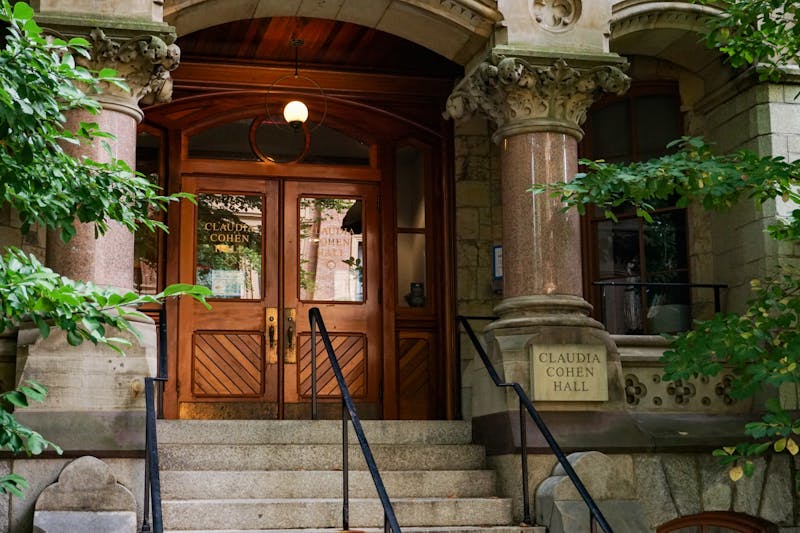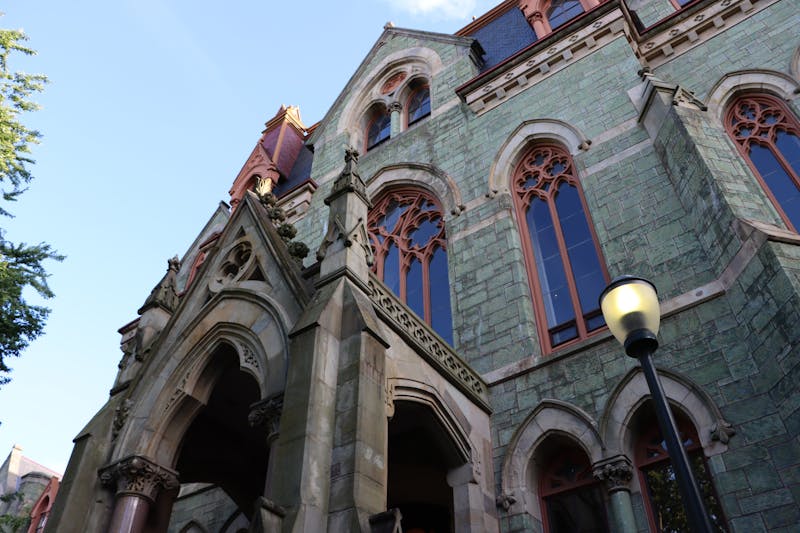
Images flash across a white screen in the lobby of Meyerson Hall -- photographs of golden domes, high stone walls, a brick wall etched with delicate patterns and neatly labeled archeological digs.
These aren't pictures of popular tourist sites in Florence or Rome but instead, are part of an educational display created by a group of graduate students to increase awareness about the destruction of Iraqi landmarks.
"The goal [of the presentation] is a long-term goal -- providing the consciousness that all of these events have serious consequences," said Omur Harmansah, an art history graduate student.
The destruction of cities is "the destruction of people's identity," second-year art history graduate student Stephennie Mulder said. "Those artifacts and museums are the cornerstone of who these people are."
The exhibit, which was available for passers-by yesterday, was coordinated by Jackie Tileston, a professor in the Graduate School of Fine Arts, and five art history graduate students. Tileston conceptualized the project and contacted the students, who specialize in the region.
They collected the photographs from various sources, copying slides in the library and making their own slides from books and their private collections.
Second-year art history graduate student Erika Tapp noted that much of the focus was on two types of artifacts in need of protection -- cities themselves, including Baghdad, which has Islamic monuments dating back to the ninth century and many museums, and desert mounds that house ancient ruins. They are in danger of inadvertent destruction when soldiers fighting in the desert take cover to protect themselves from attacks, Tapp said.
An additional problem the exhibit attempted to address is the secret looting of ancient ruins for sale at auction, which "can be just as damaging as other attacks," Mulder said.
The selling of the artifacts "starts out under the table but ends up in the highest echelons of Western society," she said. "It's only valuable because people in the West will pay for it."
While Penn students may be taking small steps to increase community awareness about the issue, it has also become a broad government concern. Mulder said that for the first time, the U.S. government met with archaeologists prior to the war, but it is unclear whether their advice is being followed.
Tapp, who went to Bosnia after the civil war there to aid the region's reconstruction, said that American and global awareness of the targeting of monuments aided the rebuilding process.
"Money poured into cities and Sarajevo was rebuilt because of consciousness," she said.
She hoped that the education and awareness provided by this and similar projects will lead to popular support of the United Nations and other groups that support preservationist causes, as well as "the willingness of the American public to support a Congress pouring money into reconstruction."
"The most critical concern is for people, and we don't want to emphasize buildings over human lives," Mulder said. "But the effort to preserve cultural heritage should only be a step behind."
The Daily Pennsylvanian is an independent, student-run newspaper. Please consider making a donation to support the coverage that shapes the University. Your generosity ensures a future of strong journalism at Penn.
DonatePlease note All comments are eligible for publication in The Daily Pennsylvanian.







